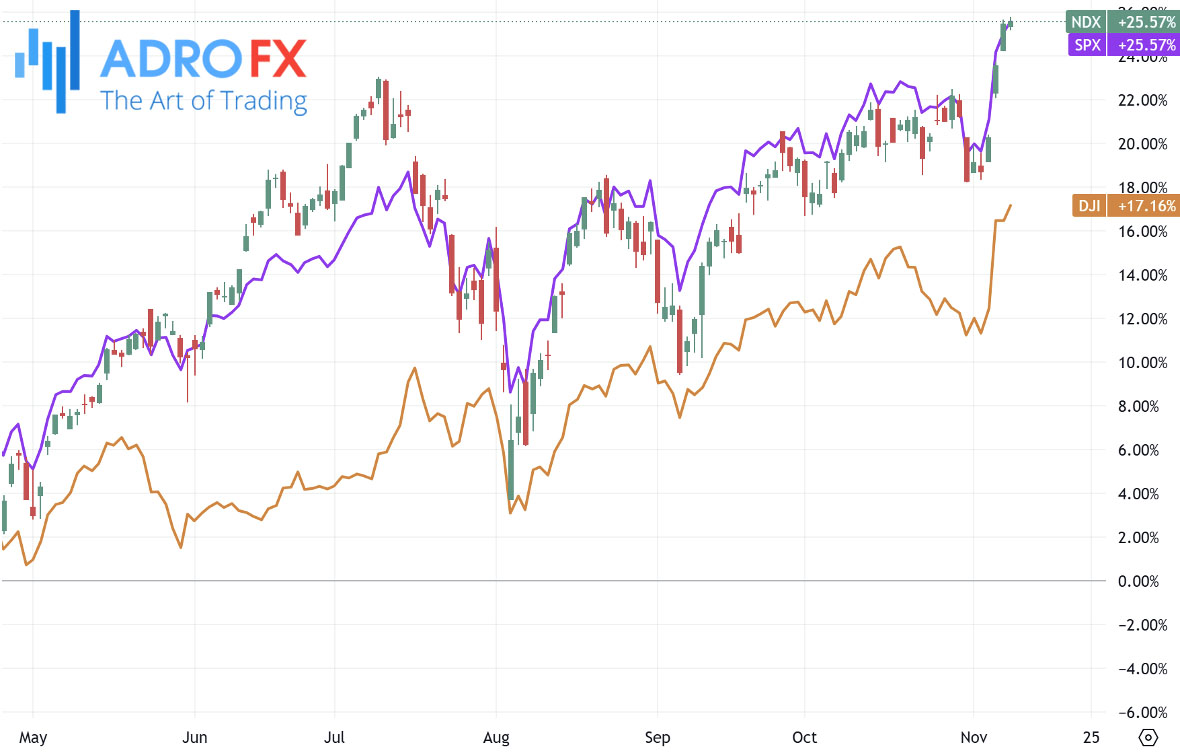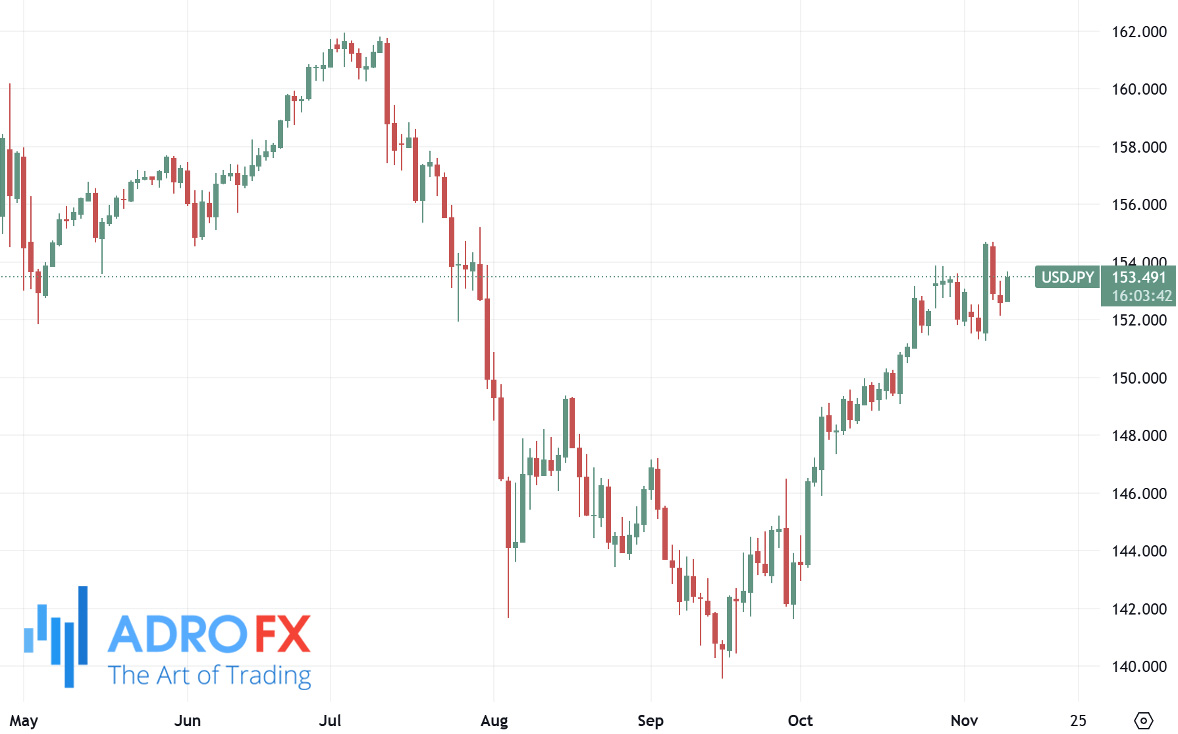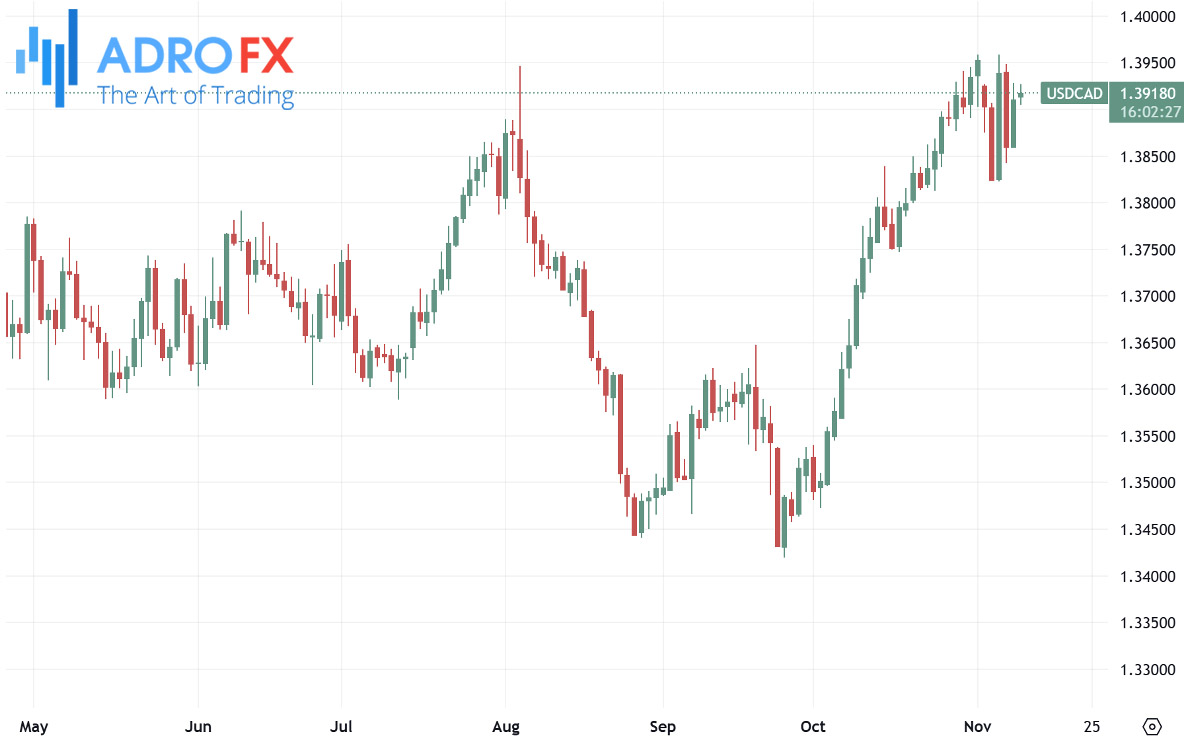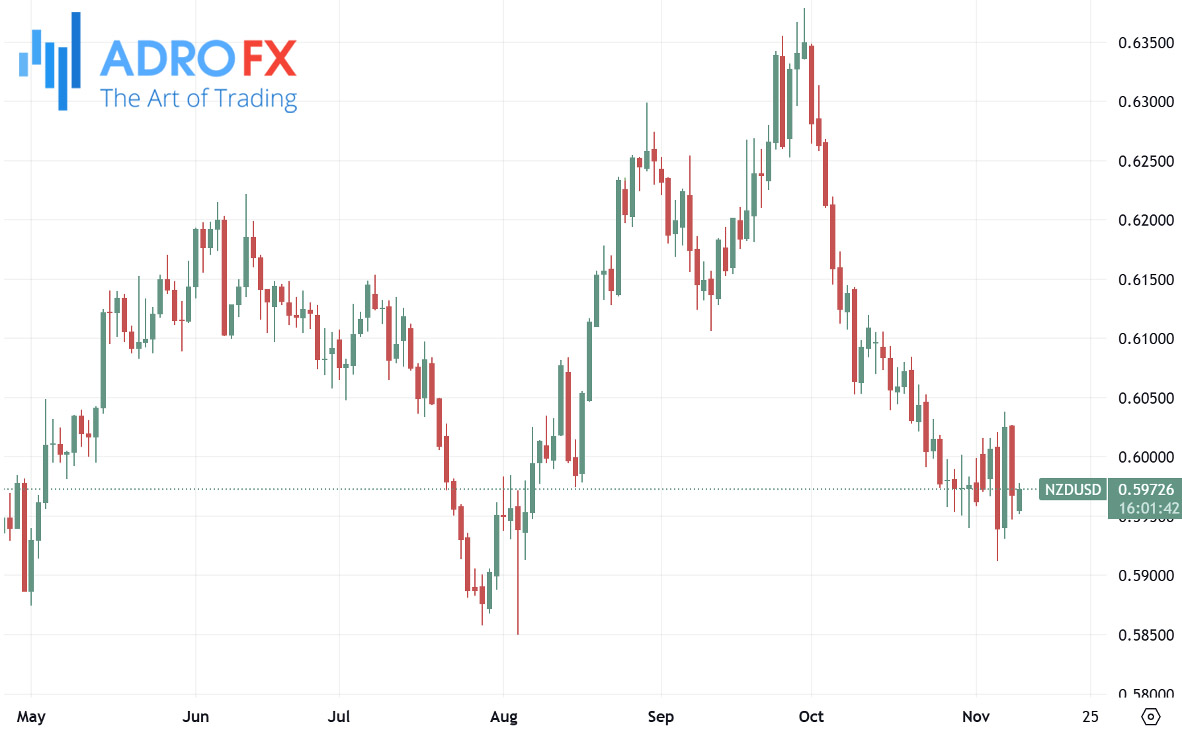Global Markets Reach New Highs Amid Optimism for a Second Trump Term | Daily Market Analysis

Key events:
- Eurozone - ECB McCaul Speaks
On Friday, the S&P 500 surged to new record levels, achieving both intraday and closing highs as optimism builds over the potential for economic expansion under a second Trump administration. The index climbed 0.4% to end at a historic high of 6,013.2 after hitting record-breaking levels during the trading day.
The Nasdaq 100 similarly closed at an all-time high, while the Dow Jones Industrial Average rose by 259 points, or 0.6%, ending at a fresh peak of 44,157.29 following an intraday record.

Stocks have continued to rally, and Wall Street analysts are optimistic about further gains. Bank of America strategist Michael Hartnett notes that the period from the US election through Inauguration Day presents a “risk-on window” for US stocks. Hartnett recommends that investors consider sectors likely to benefit from potential Trump-era policies, including financials, REITs, and small caps, with a particular focus on sectors with limited exposure to long-duration debt risks. This strategy aims to capitalize on anticipated shifts in regulatory and fiscal policies that could drive economic growth and increase corporate earnings.
In currency markets, the Japanese Yen faced steady declines during Monday’s Asian session, giving back a portion of its recent gains against the US Dollar. The Bank of Japan’s Summary of Opinions from its October meeting revealed a split among policymakers regarding the timing of future rate hikes. Political uncertainty in Japan has added to market skepticism about the BoJ’s ability to proceed with aggressive monetary tightening, undermining the JPY.

Additionally, the positive risk sentiment globally has reduced demand for the safe-haven yen, while the USD has benefited from renewed strength, lifting the USD/JPY pair above the mid-153.00s. Despite this, recent comments by Japanese authorities about possible intervention may prevent further heavy yen losses, as traders remain cautious. Investors are likely to take a wait-and-see approach ahead of key US consumer inflation data and a scheduled speech by Federal Reserve Chair Jerome Powell later in the week, both of which could impact the dollar-yen outlook.
The Australian Dollar has shown some resilience, gaining ground on Monday despite lingering concerns over Trump’s proposed tariffs on Chinese imports, which could affect Australian markets given China’s role as a major trading partner. While weaker-than-expected Chinese Consumer Price Index (CPI) data released on Saturday weighed on sentiment, the AUD has held up as investors assessed recent stimulus measures in China. However, the latest measures from China’s government have been seen as falling short of expectations, further dampening demand for exports from Australia, one of China's largest trading partners.

The yield on Australia’s 10-year government bond has also declined, reaching around 4.6%, reflecting a decrease in US Treasury yields after the Federal Reserve’s anticipated 25 basis point rate cut last week. The Reserve Bank of Australia recently kept its rate unchanged at 4.35%, emphasizing that inflation remains above target and may not stabilize until 2026.
In a related development, China announced a 10 trillion yuan debt package on Friday aimed at easing financial pressures on local governments and supporting growth. However, the package notably lacked direct stimulus elements, which has tempered investor enthusiasm and added some pressure on the Australian Dollar.
The USD/CAD pair has also strengthened as the US Dollar gains momentum on market expectations of a less dovish Federal Reserve, influenced by Trump’s policy pledges, including substantial tariffs and corporate tax cuts. The USD/CAD pair is trading around 1.3920 during the Asian session on Monday. Trump’s fiscal policies are anticipated to encourage greater investment and spending, which could drive inflation higher and lead the Fed to adopt a more restrictive stance. However, Fed Chair Jerome Powell has downplayed any near-term influence of Trump’s policies on immediate Fed decisions.

The Canadian Dollar remains under pressure, in part due to falling oil prices. West Texas Intermediate (WTI) crude has dropped to around $69.90 per barrel amid China’s modest stimulus efforts and easing fears about potential disruptions from Storm Rafael in the US Gulf of Mexico. Canada, being the largest oil supplier to the US, often sees its currency move in line with oil prices.
Meanwhile, the NZD/USD pair has rebounded to around 0.5965 during Monday’s Asian trading hours. This uplift came as New Zealand’s Reserve Bank reported a slight increase in two-year inflation expectations, rising from 2.03% in Q3 to 2.12% in Q4. Although the one-year outlook dipped from 2.40% to 2.05%, the increase in longer-term expectations has sparked renewed interest in the New Zealand Dollar.

As global markets digest political developments and monetary policy shifts, currency and stock movements reflect a complex interplay of expectations, with traders eyeing new data releases and central bank announcements in the days ahead.









